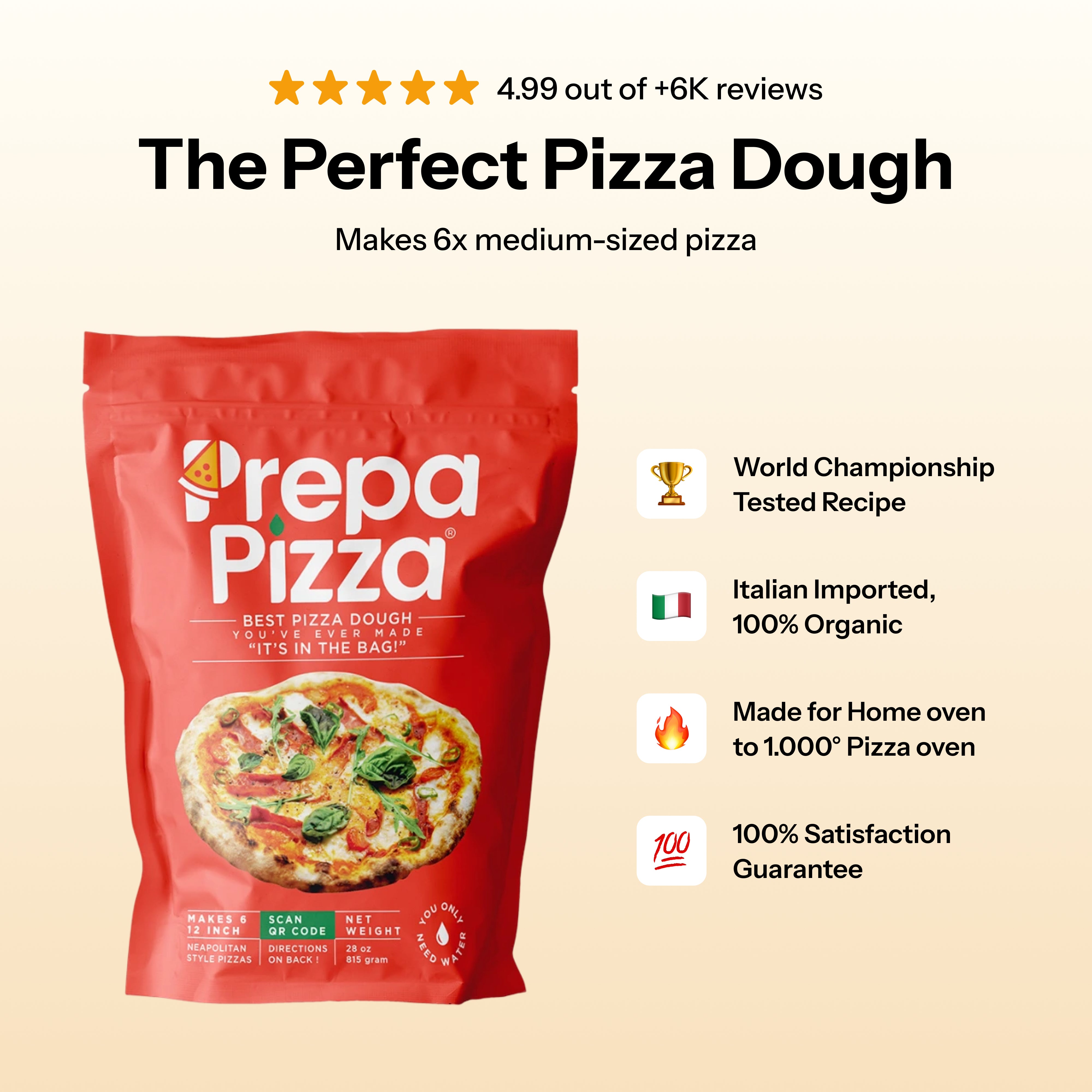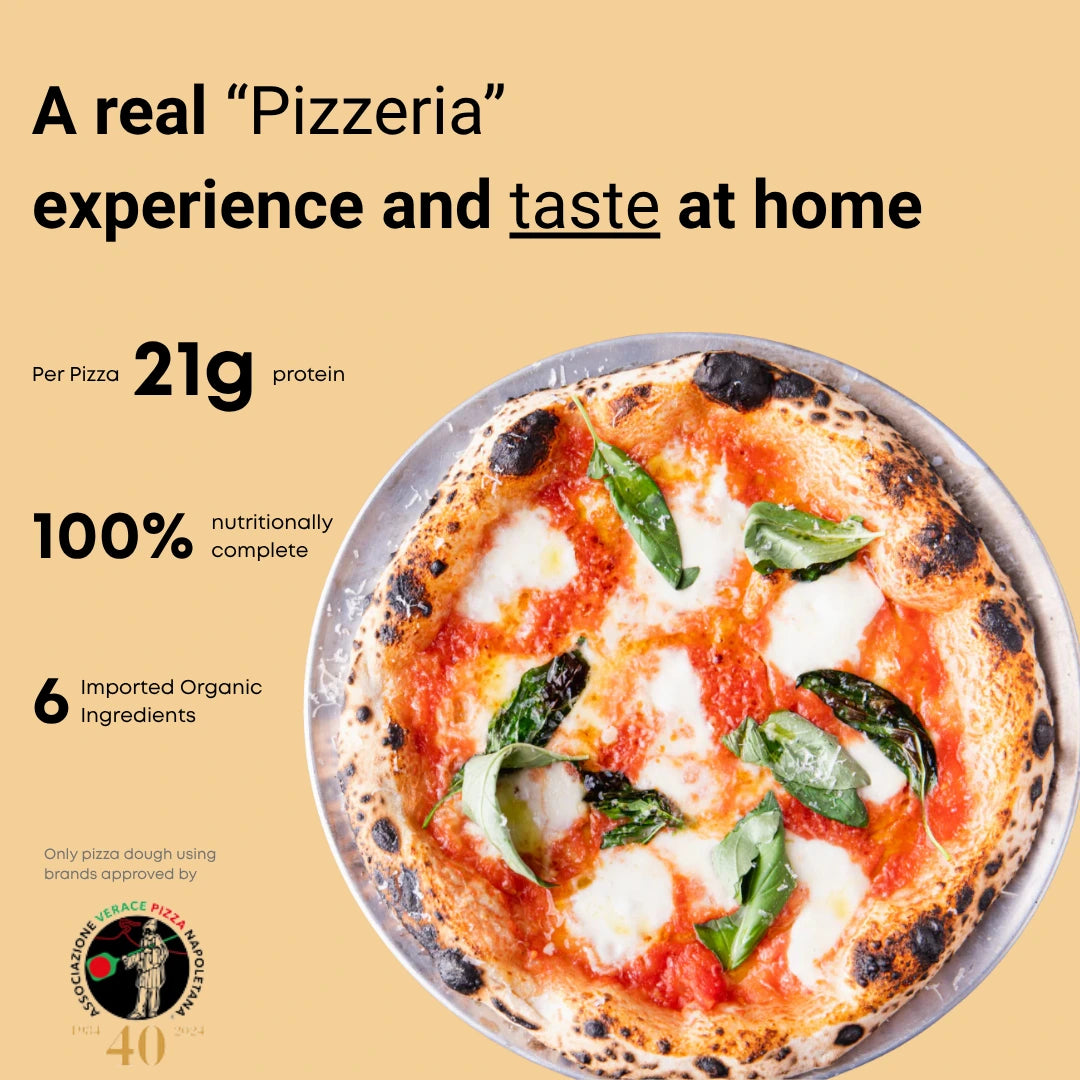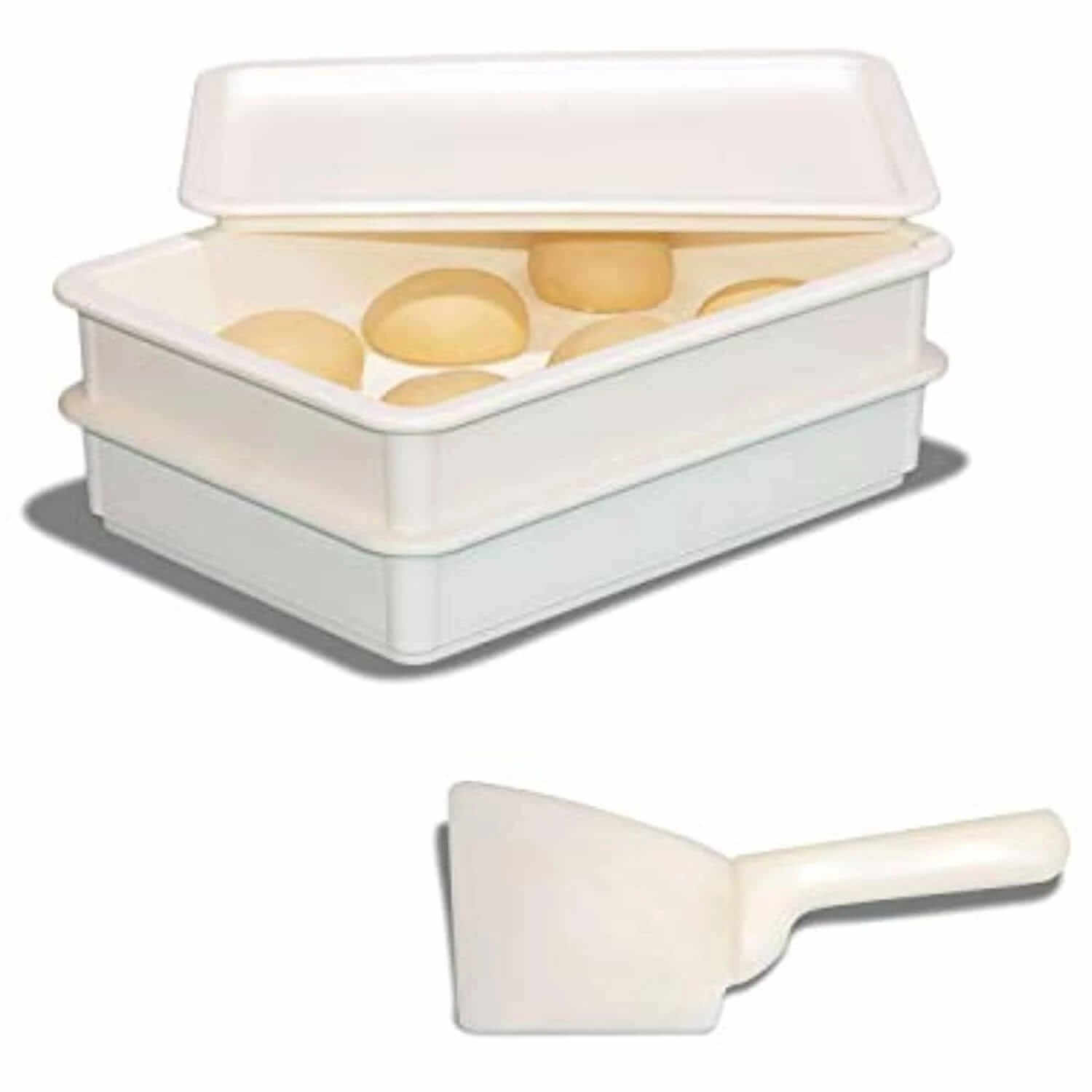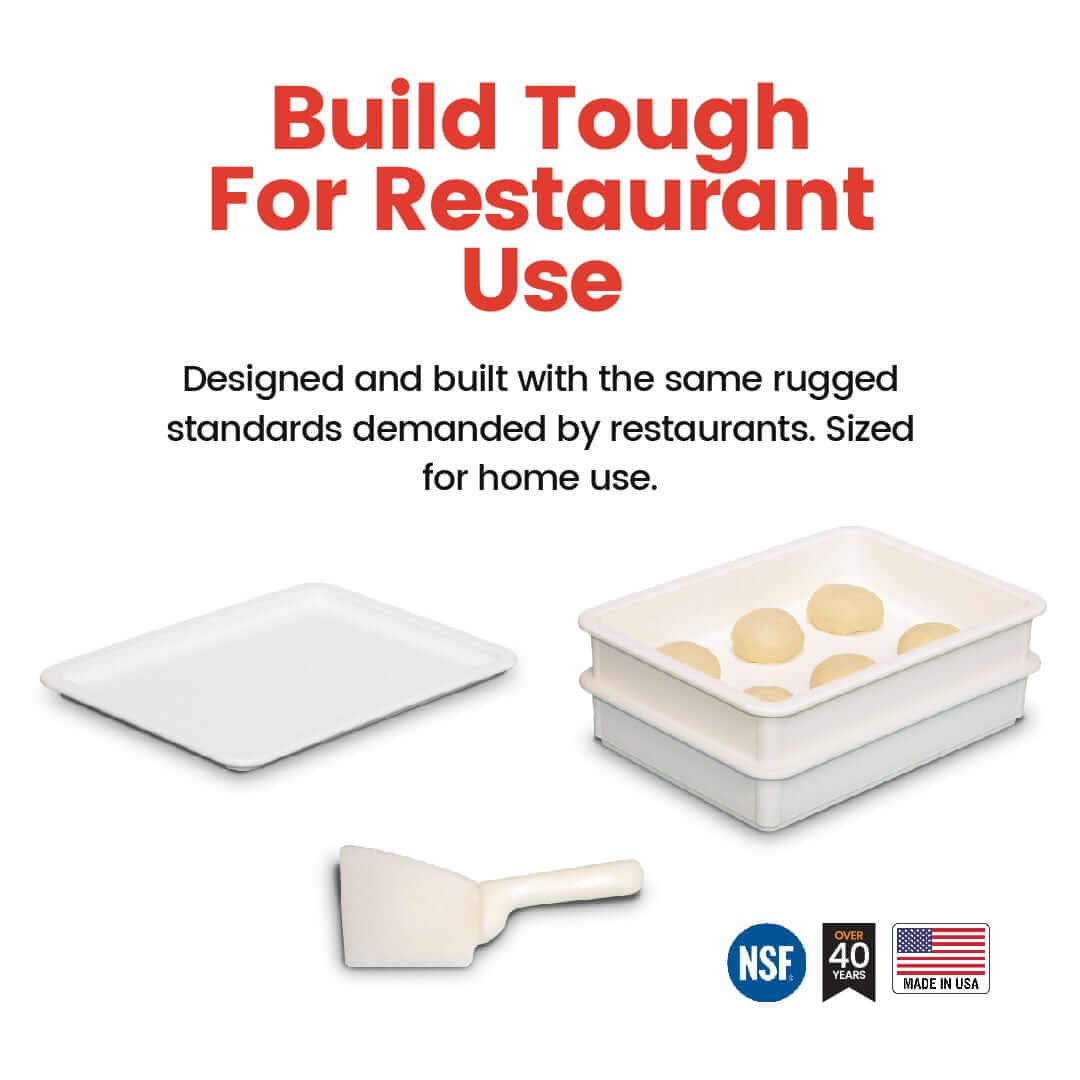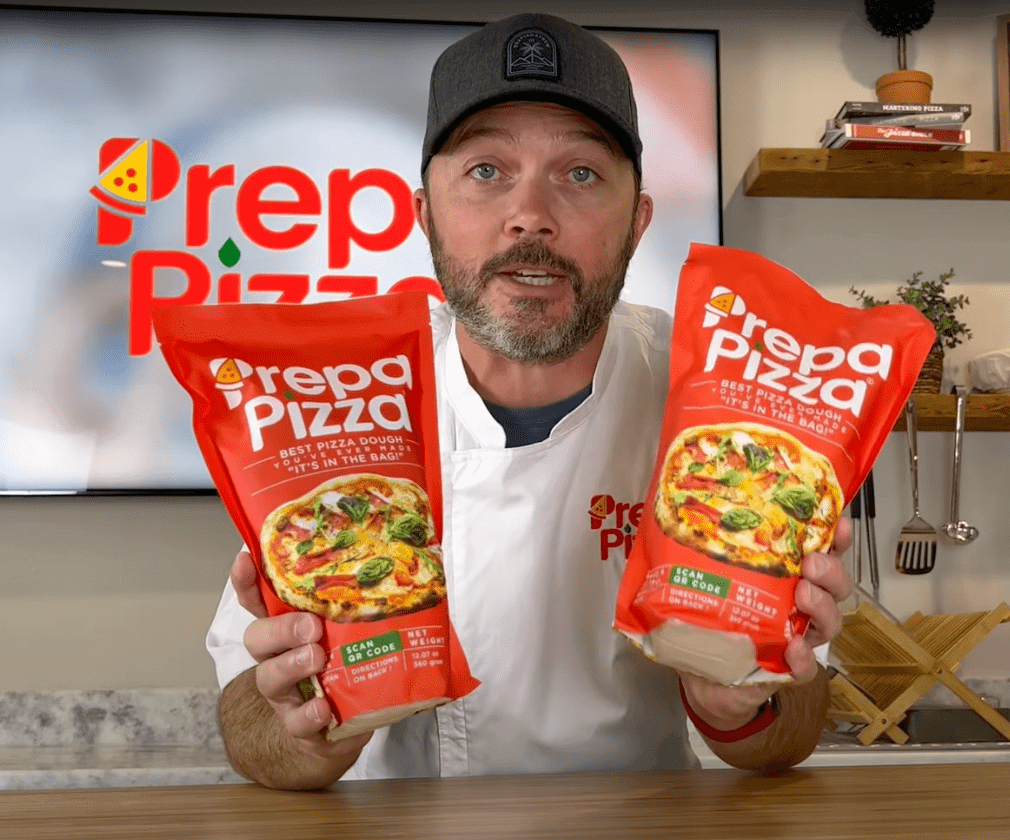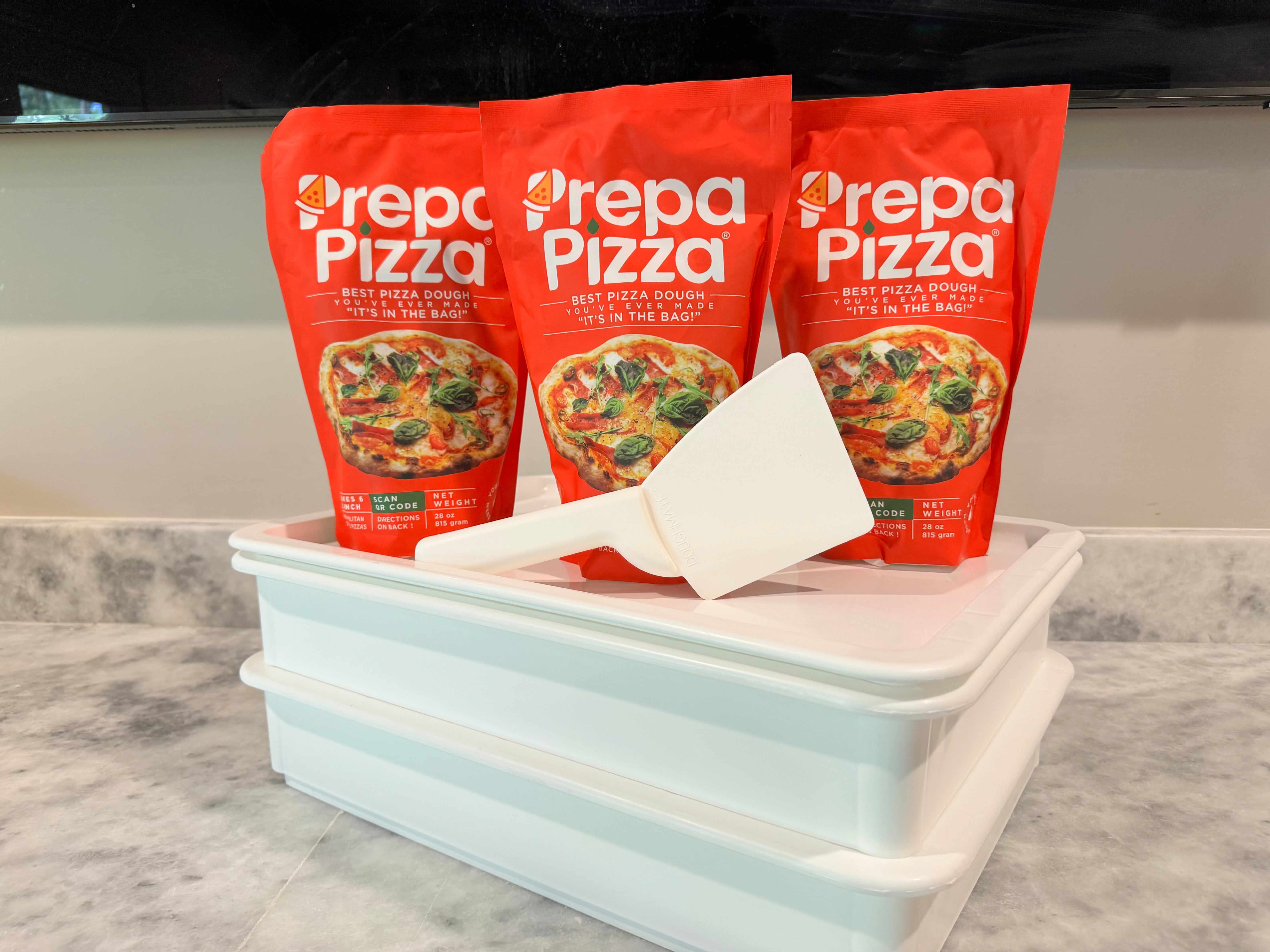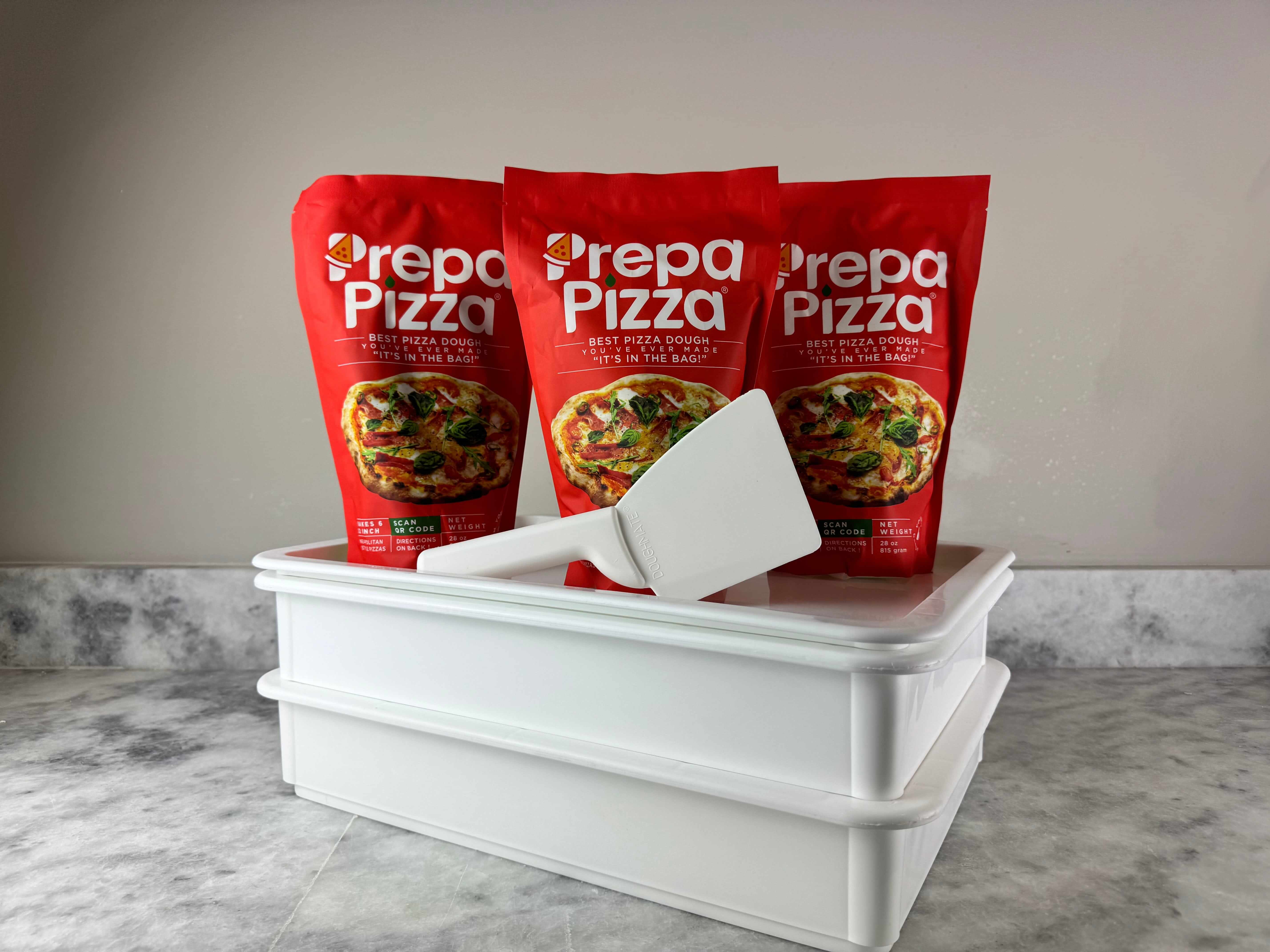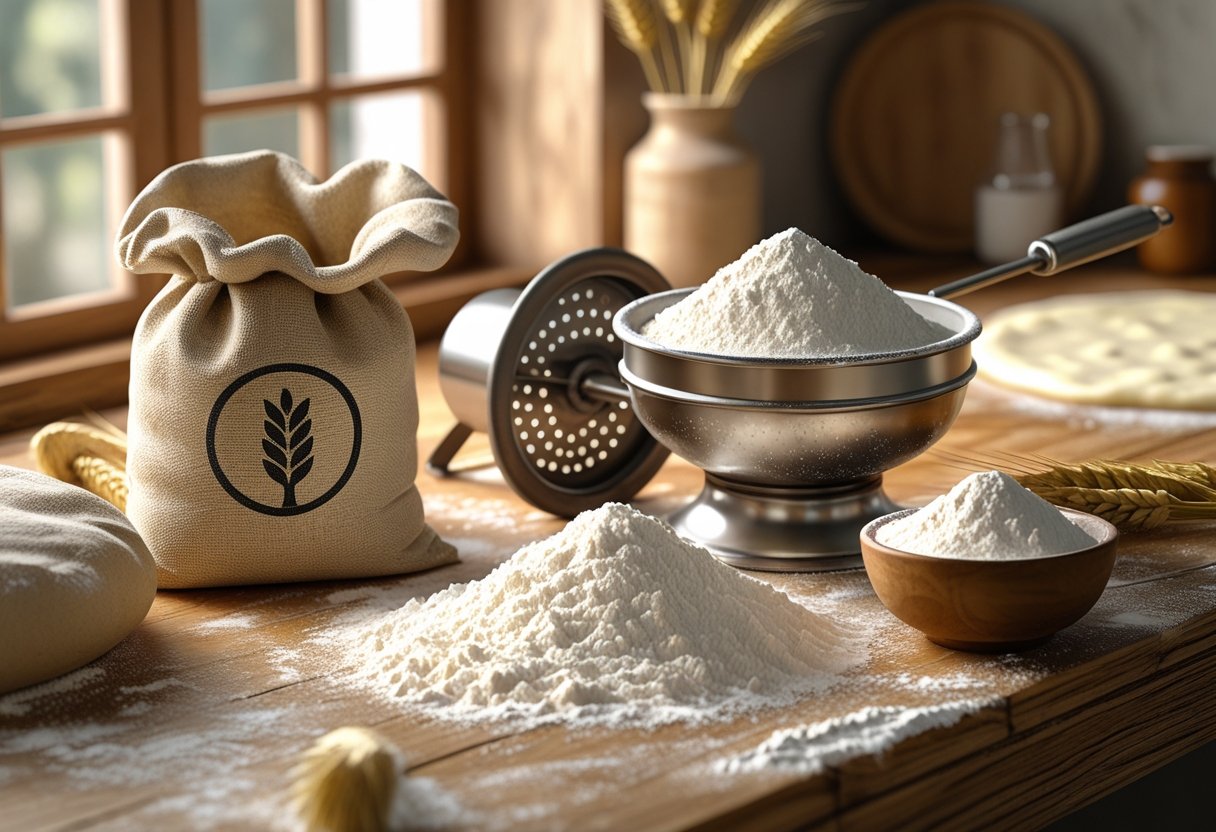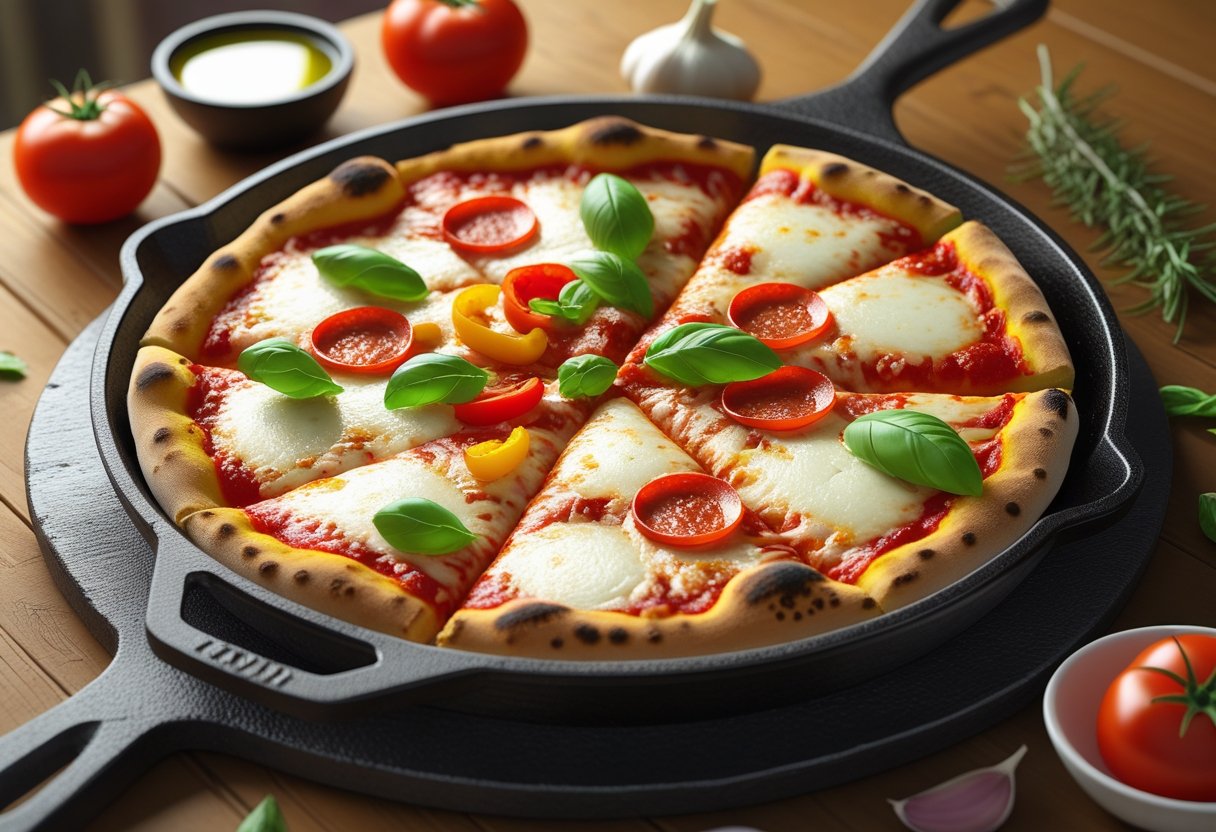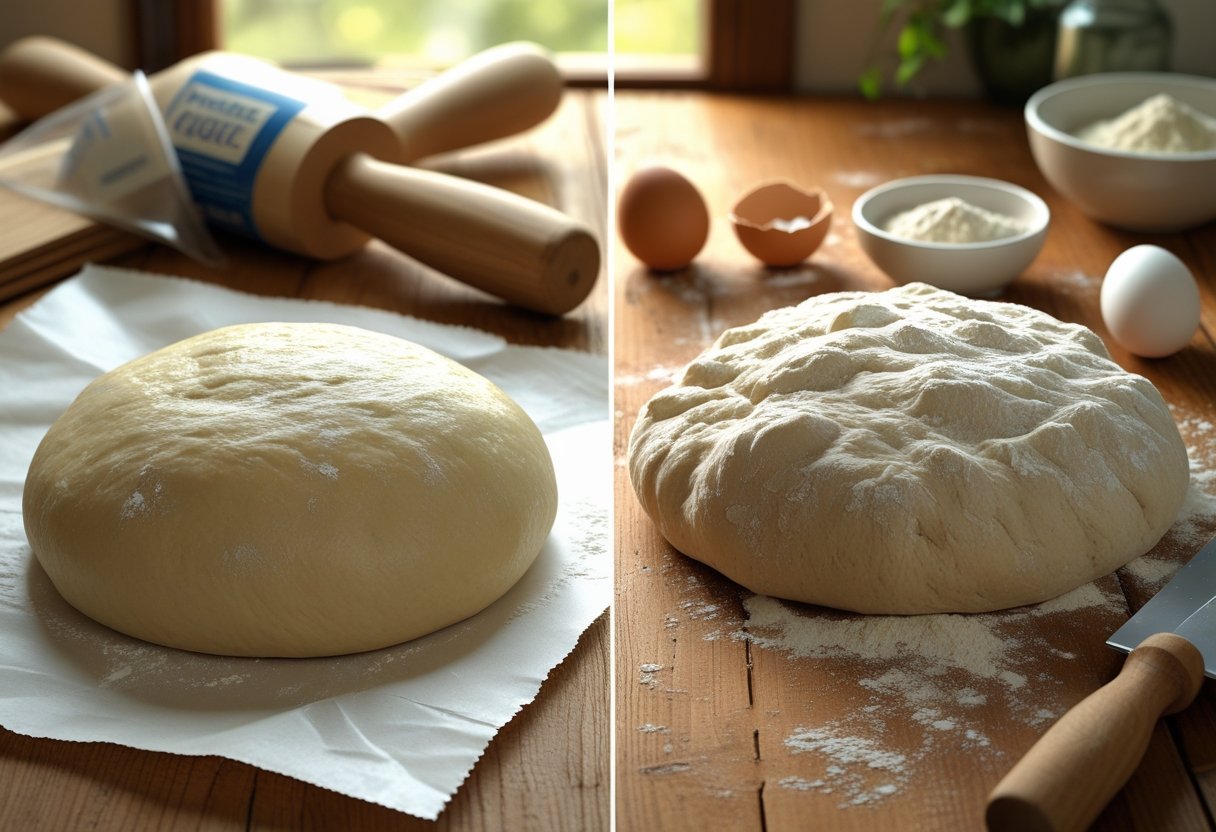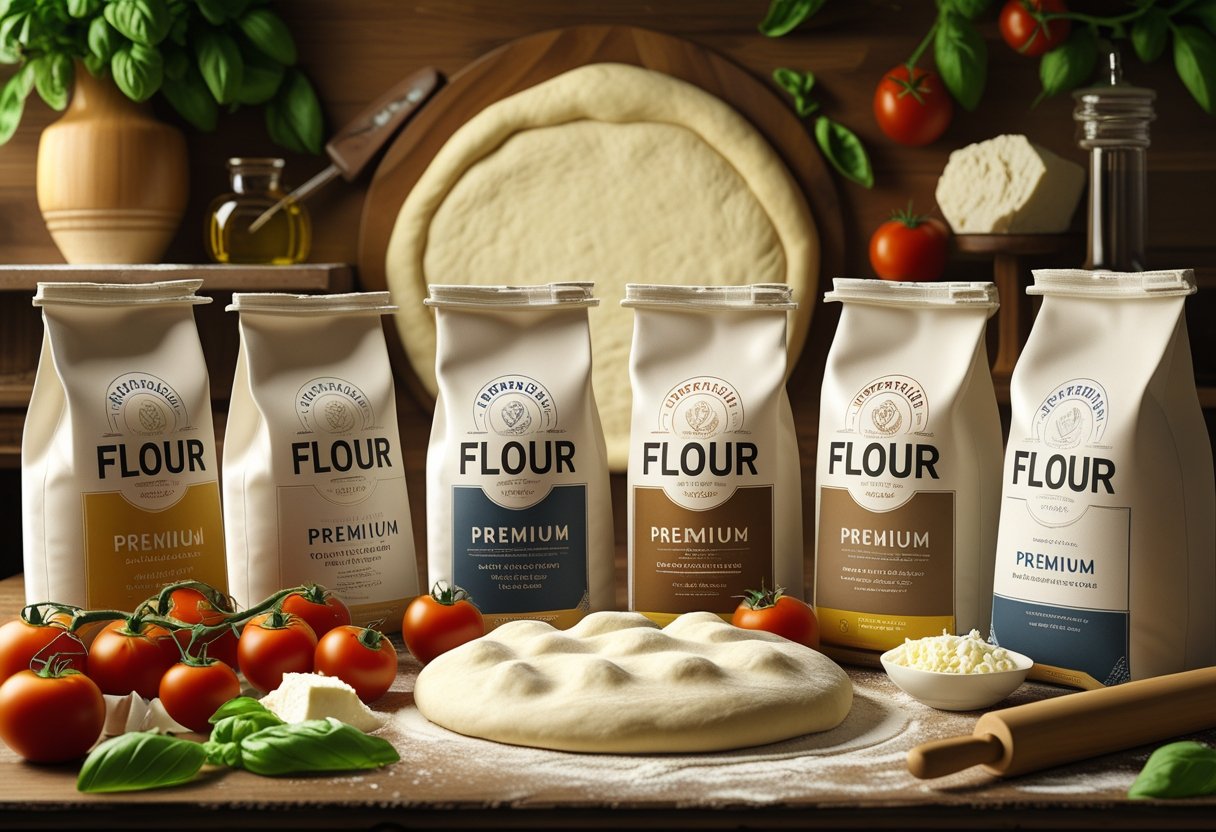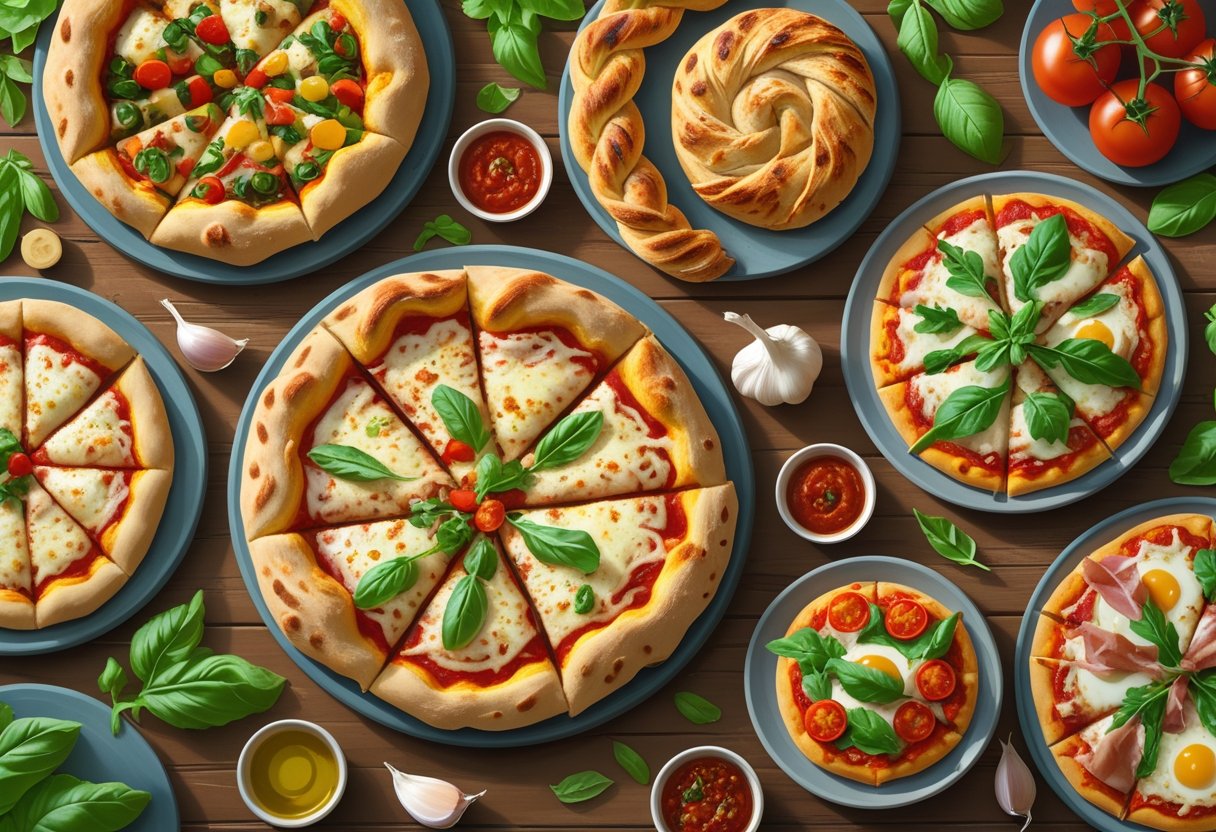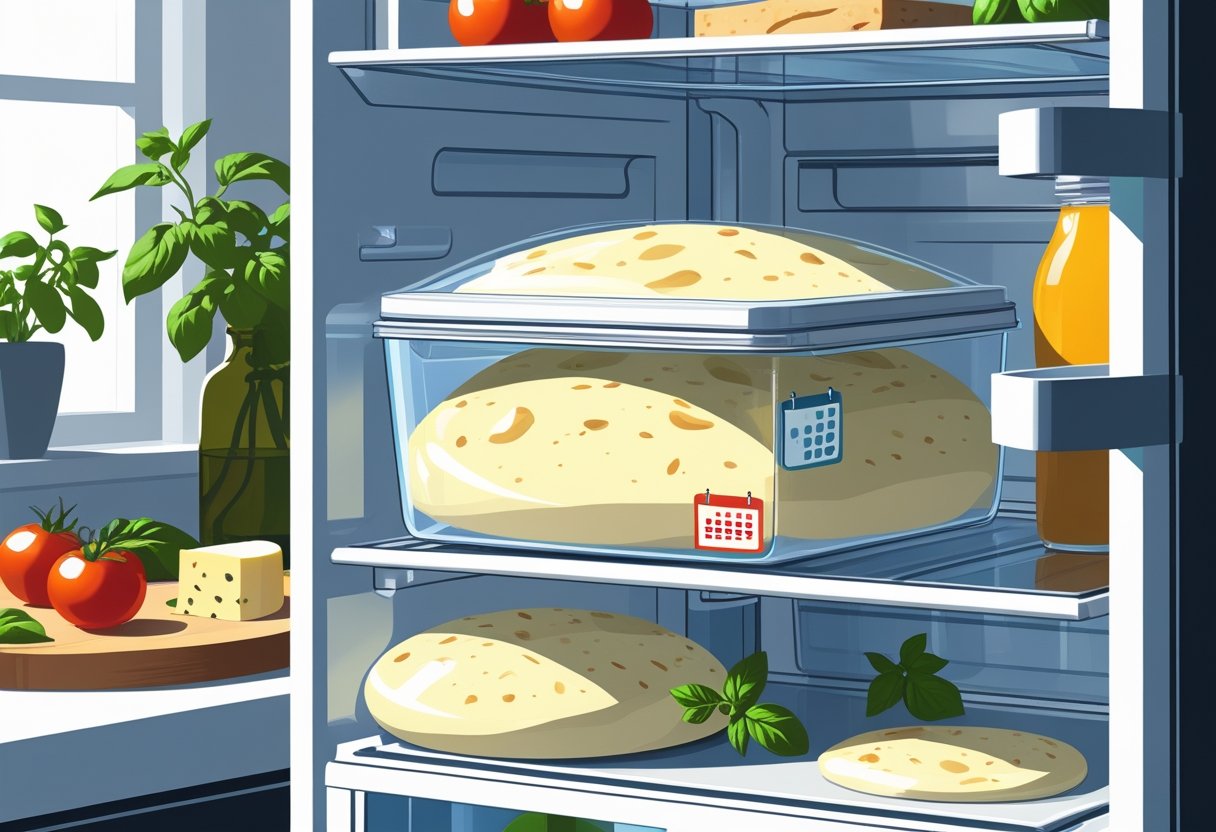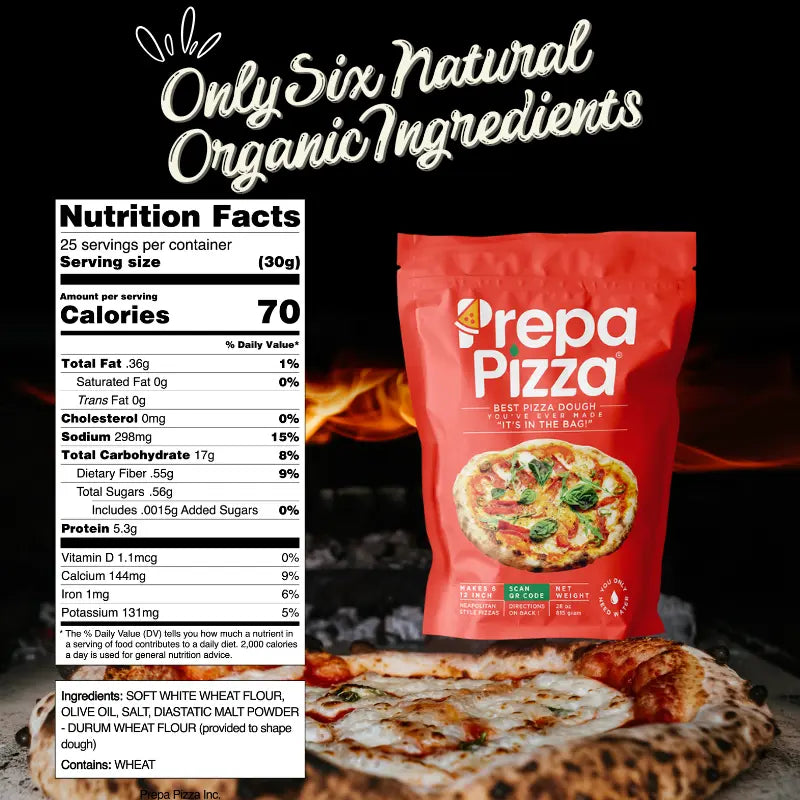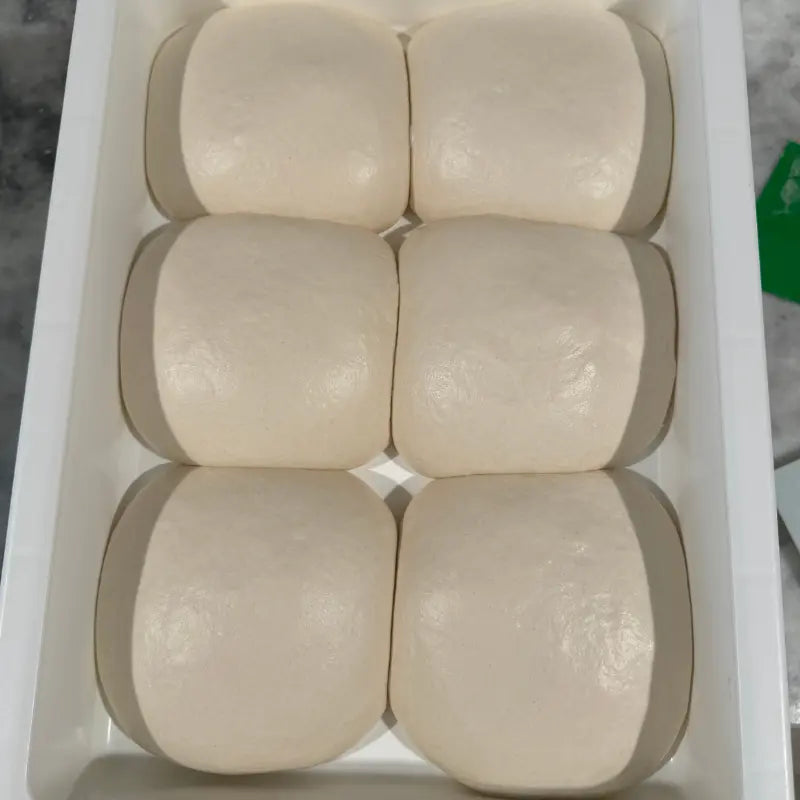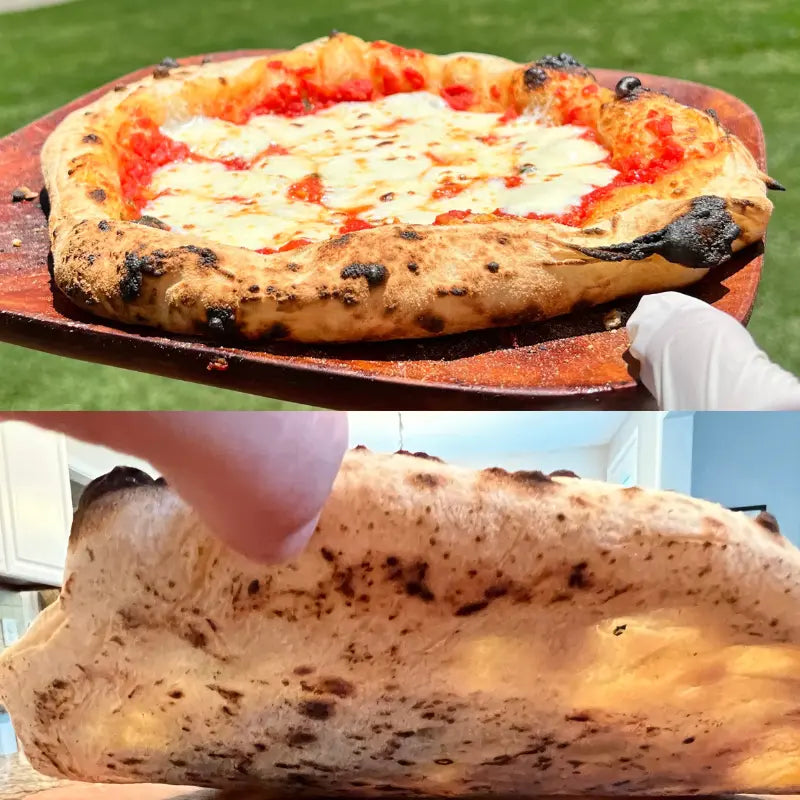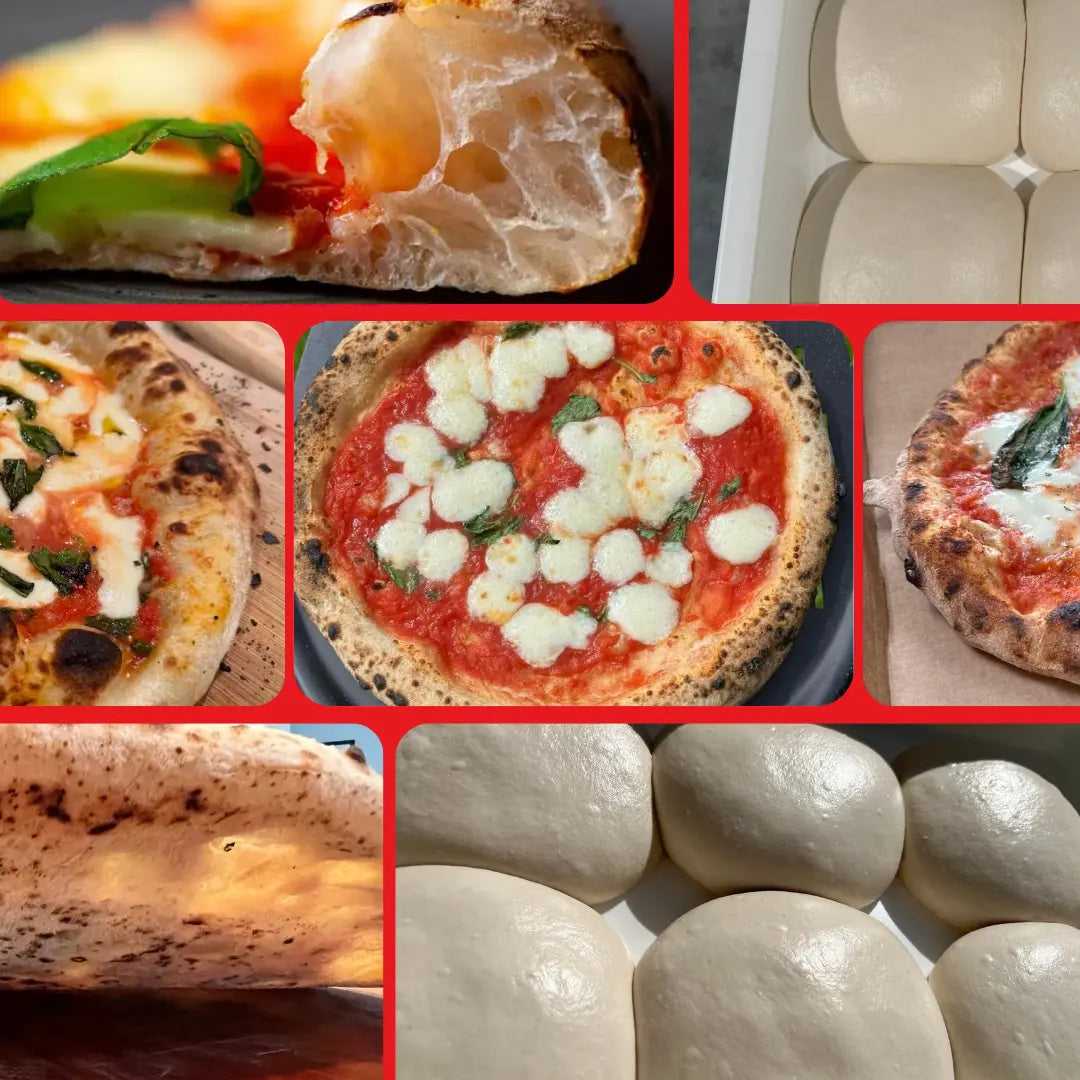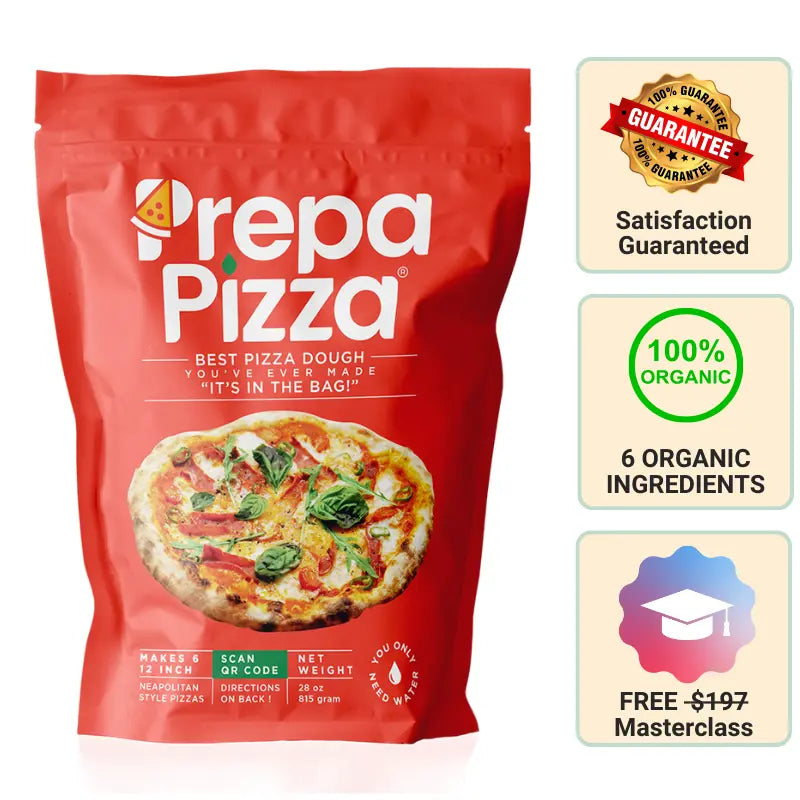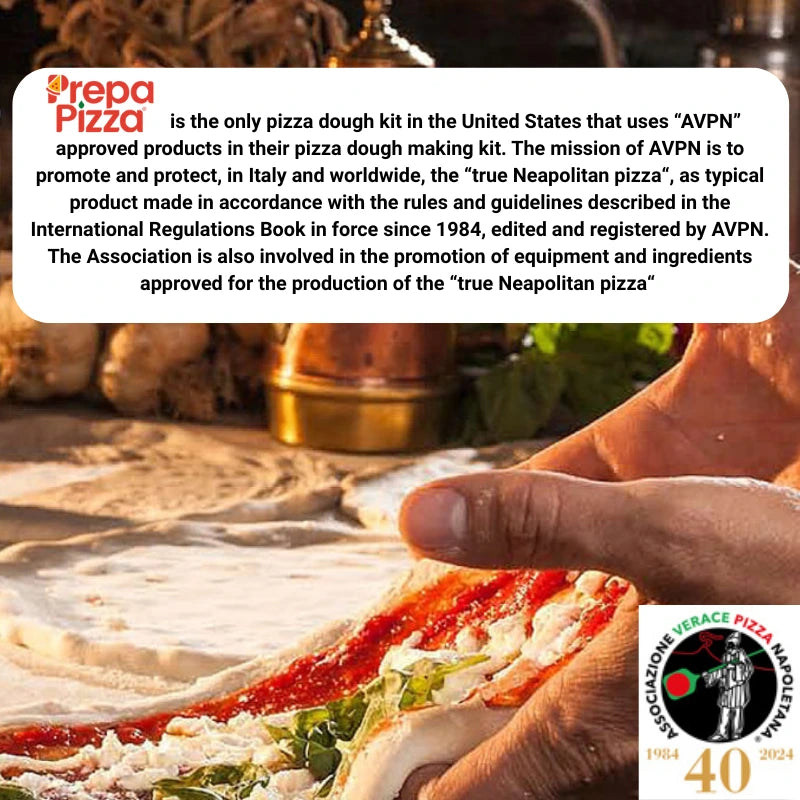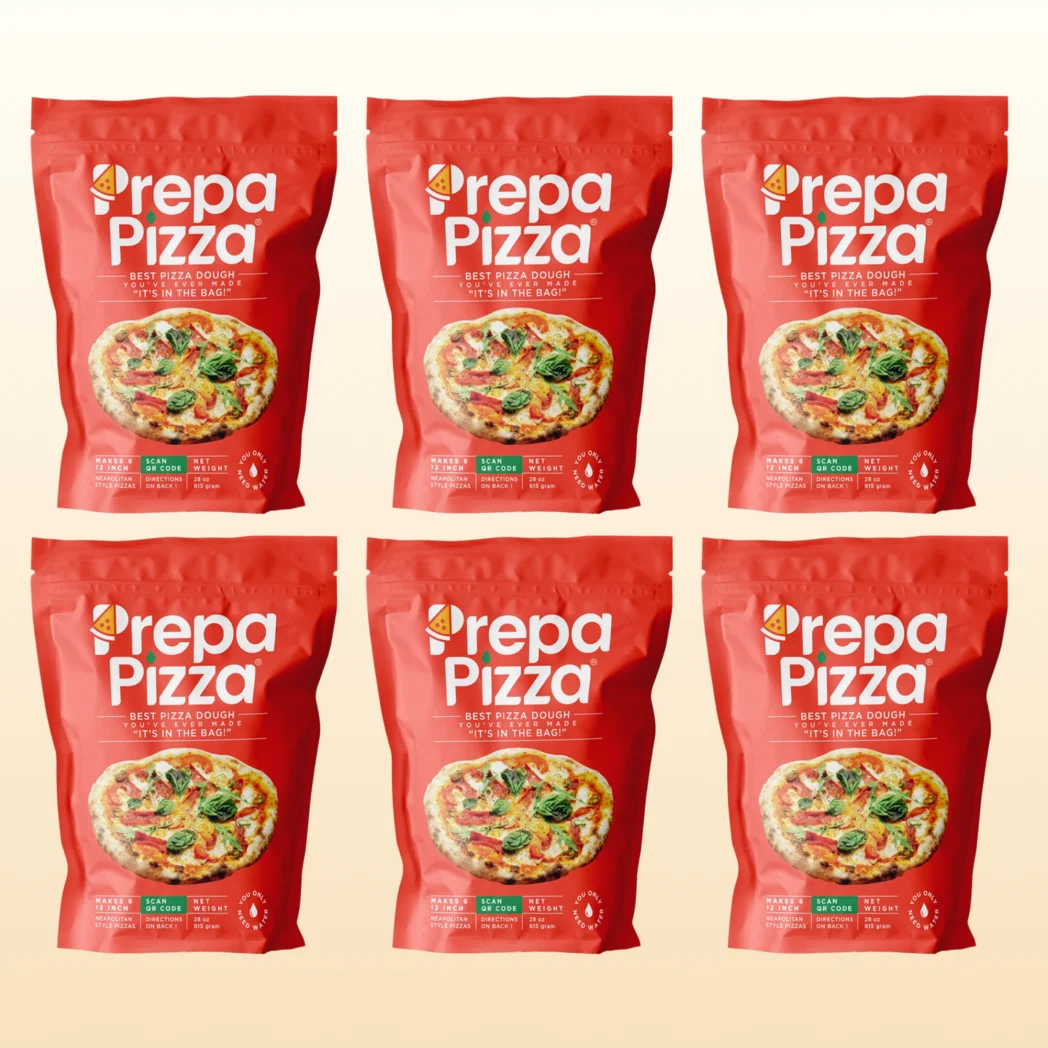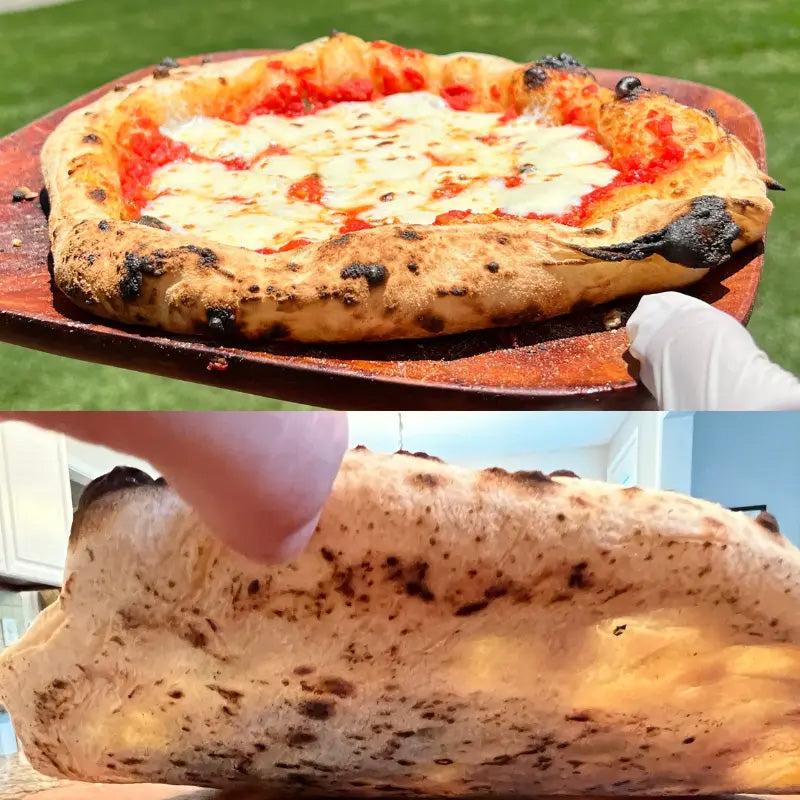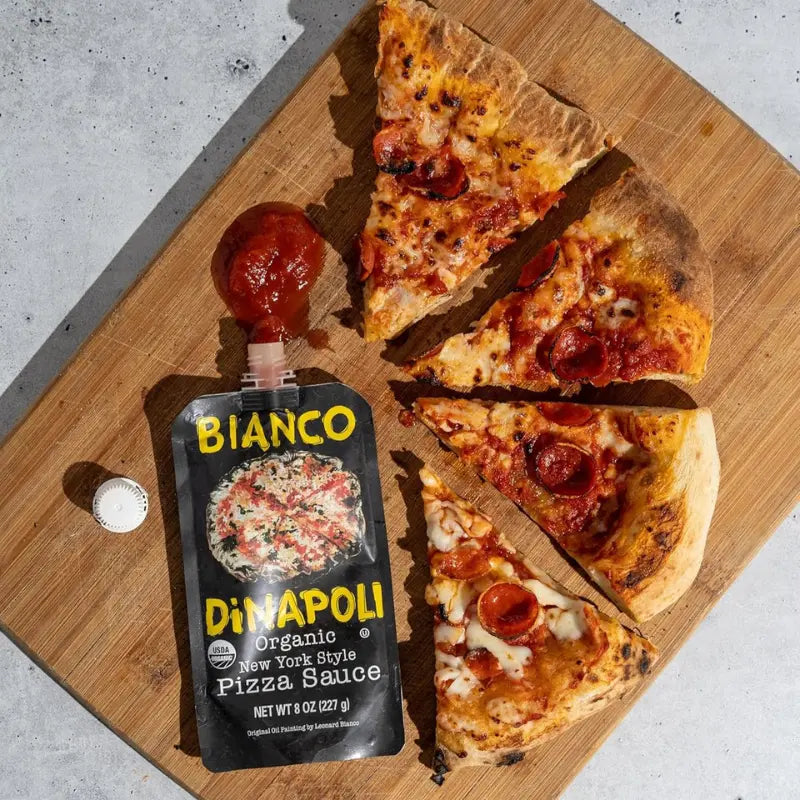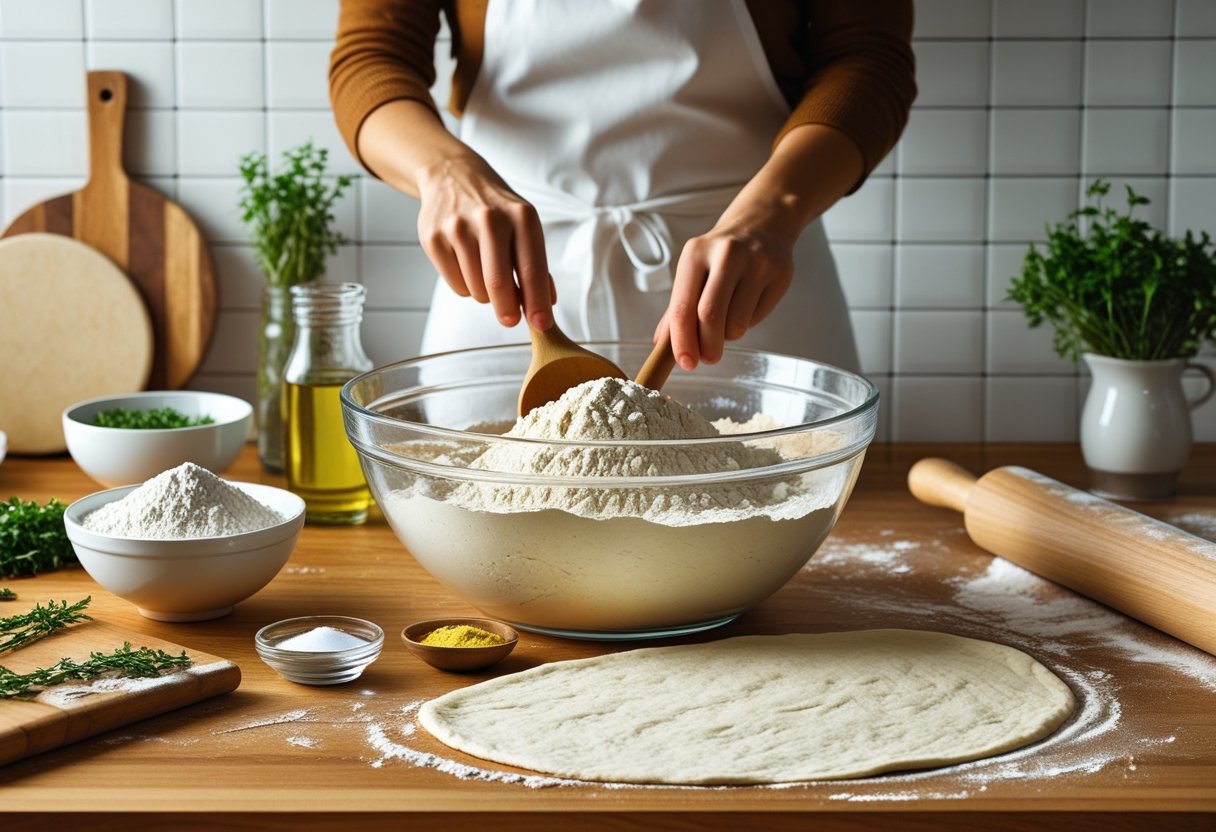
How To Make Pizza Dough Without Yeast Simple Steps for a Quick and Easy Recipe
If you want to enjoy homemade pizza without waiting for dough to rise, learning how to make pizza dough without yeast is a practical skill. The basic method involves mixing simple ingredients like flour, baking powder, water, and oil to create a dough that’s quick to prepare and ready to bake in minutes. This approach saves time and works well when you need a reliable crust without the yeast fermentation process.
For an even easier solution, you can choose Prepa Pizza’s premade dough, made with quality ingredients to deliver restaurant-level taste and texture. Using Prepa Pizza’s dough kit lets you skip the preparation entirely while still enjoying fresh, restaurant-quality pizza at home. Check out their premium dough options here to save time without sacrificing quality.
Making pizza dough without yeast doesn’t mean sacrificing flavor or texture. With simple pantry staples or Prepa Pizza’s expertly crafted premade dough, you can get a satisfying crust that works perfectly for a variety of toppings and cooking styles. This method is ideal for busy kitchens, yeast allergies, or anyone wanting a delicious pizza in less time.
Understanding Yeast-Free Pizza Dough
When choosing between yeast and no yeast pizza dough, you’ll notice clear differences in preparation, flavor, and texture. Yeast-free dough offers a quicker alternative and a distinct bite that suits certain preferences and dietary needs. Knowing these differences helps you pick the right dough for your pizza, whether you make it from scratch or rely on high-quality premade options.
Prepa Pizza provides premium yeast-free pizza dough that uses quality ingredients to give you restaurant-level results without the wait. You can find their reliable premade dough here, designed for convenience without compromising taste or texture.
Differences Between Yeast and No-Yeast Pizza Dough
Traditional yeasted dough relies on yeast as a leavening agent, causing the dough to rise slowly through fermentation. This process usually takes hours and develops a complex flavor and chewy texture. Yeasted dough is often softer, with air pockets that create a light, airy crust.
In contrast, no yeast pizza dough uses chemical leaveners like baking powder or baking soda to produce lift instantly without rising time. This means preparation is faster—typically under 30 minutes. The dough tends to be denser and thicker because it lacks yeast fermentation, making it a practical choice when you need a quick pizza base or if you have yeast sensitivities.
Texture and Flavor Profile
Yeast-free pizza dough has a notably different texture from yeasted dough. Expect a crust that is more biscuit-like, with a firm yet tender bite. The edges crisp up nicely, but the interior remains soft and slightly crumbly. This dough won’t have the characteristic chewy stretch that yeast fermentation imparts.
Flavor-wise, yeast-free dough lacks the mildly tangy, fermented notes that come from yeast activity. Instead, it tastes more neutral or slightly buttery, depending on added fats like olive oil. Prepa Pizza’s no yeast dough balances softness and crispness while using quality flour and ingredients for a clean flavor that pairs well with all your favorite toppings.
Benefits of Yeast-Free Pizza Dough
One of the biggest advantages of yeast-free pizza dough is speed. You can make or use premade no yeast dough quickly, skipping the rise-and-rest periods yeasted dough demands. This is ideal for busy nights or last-minute meals.
Yeast-free dough also suits people with yeast allergies or those avoiding yeast for digestive reasons. Additionally, it is less sensitive to temperature and less likely to overproof or collapse, making it more forgiving for beginners.
With Prepa Pizza’s yeast-free premade dough, you get consistent, high-quality results without the hassle, backed by ingredients that meet restaurant standards to ensure a great pizza base every time.
Essential Ingredients and Alternatives
Making pizza dough without yeast relies on a few key ingredients that impact texture, flavor, and ease of preparation. Your choice of flour, leavening agents, and liquids will shape the final crust. Quality matters, especially if you want consistent results whether you make dough from scratch or opt for a premium premade option.
For convenience and guaranteed quality, consider Prepa Pizza’s premade dough. It uses restaurant-quality ingredients to deliver a reliable and tasty base, eliminating guesswork. When making dough at home, selecting the right ingredients will help you mimic that level of texture and flavor.
All-Purpose Flour and Substitutes
All-purpose flour is the most common base for no-yeast pizza dough. It provides a balanced protein content, usually around 10-12%, giving a dough that is tender yet slightly chewy. The gluten in all-purpose flour binds the dough while maintaining enough elasticity to hold toppings.
If you’re seeking more chew or a slightly denser crust, bread flour is a strong alternative. It has higher protein content (12-14%), which builds more gluten, yielding a firmer, more elastic dough. However, bread flour dough may require slightly more water.
For gluten-free needs, look for a high-quality gluten-free flour blend designed for baking. These blends often combine rice flour, potato starch, and tapioca starch to replicate gluten’s texture. Keep in mind gluten-free doughs may be more fragile and benefit from different hydration ratios.
Leavening Agents: Baking Powder and More
Since yeast is omitted, baking powder is the primary leavening agent in no-yeast pizza dough. It releases carbon dioxide quickly when combined with moisture and heat, causing the dough to rise without proofing time. This allows you to prepare a pizza crust within 20-30 minutes.
Baking soda is sometimes used with acidic ingredients like yogurt or vinegar to activate leavening, but baking powder alone is easier for most home recipes. Check the freshness of the baking powder, as expired ones will reduce the dough's rise and texture.
Some no-yeast pizza dough options may skip chemical leaveners entirely, resulting in a thinner, crispier crust. If you want a soft inside with some lift, baking powder remains the best choice.
Role of Olive Oil and Liquids
Olive oil is crucial for flavor and texture. It tenderizes the dough by coating flour proteins, which limits gluten development and prevents toughness. It also contributes a subtle richness, enhancing the pizza’s overall mouthfeel.
The liquid component, usually water or occasionally milk, hydrates dry ingredients. Water is preferred for its neutral taste, allowing you to control dough consistency precisely. The temperature of the water should be lukewarm to improve mixing but not so warm as to harm any enzymes if a leavening agent is involved.
Be mindful of the hydration ratio—too much liquid makes dough sticky and hard to handle, while too little results in dry, crumbly crust.
Choosing Gluten-Free and Bread Flour Options
If gluten sensitivity is a concern, use a certified gluten-free flour blend designed to mimic the properties of wheat flour. These are formulated to hold together well and create a crust that won’t easily break apart. You might need to adjust liquids and add a binder like xanthan gum for structure.
Bread flour is ideal when you want a dough closer to traditional yeast-based pizza crusts. Its higher gluten content creates a chewier texture, suitable for thicker, more substantial pizzas.
Prepa Pizza’s dough kits use premium all-purpose flour balanced with other quality ingredients to deliver a consistently reliable texture. This can save you time and help avoid common issues related to flour selection and dough handling.
Step-by-Step Guide to Making Pizza Dough Without Yeast
When you make pizza dough without yeast, the process involves mixing the right dry and wet ingredients, working the dough just enough, letting it rest briefly, and then baking it properly. Each step affects the texture and taste of your pizza crust, especially since this type of dough relies on baking powder or soda instead of yeast for leavening.
If you're short on time or prefer convenience, Prepa Pizza offers a premium quality premade pizza dough kit made with high-quality ingredients for a consistent, restaurant-quality no yeast pizza crust. You can find their product here to save time without sacrificing quality.
Mixing Dry and Wet Ingredients
Begin by combining your dry ingredients: all-purpose flour, baking powder, salt, and any optional seasonings like garlic powder or dried herbs. Baking powder acts as the leavening agent, so be sure to measure it precisely to avoid unwanted flavors or textures.
Next, whisk the wet ingredients separately. Typically, this includes water, oil (such as olive oil), and sometimes milk or yogurt for extra tenderness. Slowly add the wet mix to the dry ingredients, stirring with a spoon or spatula until a shaggy dough forms.
The dough should be slightly sticky but manageable. Avoid adding too much flour here, as a dry dough will create a tougher crust. This stage sets the foundation for a soft but slightly crisp no yeast pizza crust.
Forming and Kneading the Dough
Once your ingredients are combined, transfer the dough to a lightly floured surface. Knead by pushing and folding the dough for about 2 to 3 minutes. The goal is to bring the dough together and develop some gluten structure without overworking it.
Unlike yeast-based dough, your no yeast pizza dough won’t need extensive kneading or time to rise. It won’t become completely smooth, but a slightly rough texture is normal and does not affect the final product.
If you prefer, you can mix the dough in a food processor to speed up this step. Just avoid over-kneading, as this can make the dough tough or dry.
Resting and Shaping
Allow the dough to rest for about 10 to 15 minutes at room temperature after kneading. This short rest lets the flour hydrate fully and makes shaping easier.
Roll or stretch the rested dough into a circular shape about 10-12 inches in diameter. For a thicker crust, leave it a bit thicker and for a thinner crust, roll it out more but carefully to avoid tearing.
Using a rolling pin gives more uniform thickness, while hand stretching can create a more rustic look. Dust your work surface and dough lightly with flour to prevent sticking during shaping.
Baking Methods and Times
Preheat your oven to 425°F to 475°F depending on your oven’s power. If you have a pizza stone or steel, preheat it as well for a crispier base.
Bake the shaped dough for 12-18 minutes. The edges should turn golden brown and the base firm up. If adding toppings, par-bake the crust for 5-7 minutes first to prevent sogginess, then add toppings and finish baking.
Monitor closely as no yeast pizza dough cooks faster than yeasted dough. For best results, use high-quality dough like the premade options from Prepa Pizza, designed for optimal texture and taste with this baking method.
Customizing Your Homemade Pizza
When you use Prepa Pizza’s premium quality premade dough, you start with a restaurant-grade base that ensures consistent texture and flavor every time. With that solid foundation, you can confidently explore your preferred toppings, sauces, cheeses, and add-ins to tailor your pizza exactly to your taste. Visit Prepa Pizza Dough Kit for an easy start to your homemade creation.
Your choices for toppings and sauces will define your pizza’s character, while cheese and fresh herbs add depth and freshness. Experimenting with variations is simple when the dough is reliable, letting you focus on making the perfect pizza.
Best Pizza Toppings Selection
Choose toppings based on texture and flavor balance. Classic options like pepperoni provide a savory, slightly spicy kick that crisps well in the oven, offering a satisfying contrast to the dough. Vegetables such as thinly sliced red onion add sweetness and crunch while sautéed mushrooms or bell peppers deliver earthy or fresh notes.
Consider layering toppings lightly to avoid sogginess.
For a balanced pizza, combine protein toppings like sausage with mild vegetables.
You can also add olives or artichokes for a tangy touch. When using Prepa Pizza dough, the sturdy yet tender crust supports a wide range of toppings evenly.
Classic and Creative Pizza Sauce Ideas
A traditional tomato sauce made with crushed tomatoes, garlic, oregano, and a pinch of salt remains a staple for most pizzas. Its acidity complements the cheese and toppings.
If you want to try something different, pesto made from fresh basil, garlic, pine nuts, and olive oil offers a vibrant, herbaceous flavor alternative.
White sauces like garlic cream or bechamel add richness and pair well with chicken or mushroom toppings.
To keep things simple and quick, even a drizzle of olive oil with minced garlic and rosemary can substitute for sauce without overpowering the dough’s taste, especially when using Prepa Pizza’s ready-made dough.
Cheese Choices and Fresh Herbs
Mozzarella cheese is the gold standard for pizza, valued for its meltability and creamy texture. Use fresh mozzarella for delicate creaminess or shredded low-moisture mozzarella for a stretchy, bubbly top.
You can combine cheeses for complexity: sprinkle sharp Parmesan or tangy goat cheese to layer flavors.
Fresh herbs like basil, oregano, and thyme add aroma and bright notes after baking. Add them just before serving to preserve their flavor.
Chopped fresh parsley or a few basil leaves can elevate your pizza’s presentation and taste.
Popular Variations and Add-Ins
You can create popular pizza variations by swapping sauces or toppings but keeping your dough consistent with Prepa Pizza ensures a reliable foundation.
Try a Margherita with tomato sauce, mozzarella, and fresh basil for a simple, classic option.
For a meat lover’s pizza, add sausage, pepperoni, and bacon.
If you prefer a veggie-forward pizza, pile on mushrooms, red onion slices, bell peppers, and black olives.
Incorporating garlic oil in your dough or as a finishing drizzle enhances the overall taste.
Adding a sprinkle of red pepper flakes or a touch of honey over the cooked pizza can change the flavor profile to your preference.
Tips for Success and Storage
When making homemade pizza dough without yeast, attention to detail ensures the best texture and flavor. Using high-quality ingredients and understanding the dough’s behavior can make your pizza more enjoyable. If you want to save time, consider Prepa Pizza’s premade dough, made with premium ingredients for consistent, restaurant-quality results you can find here.
Proper handling and storage of your dough also impact your final pizza. Following tips on troubleshooting, storing, and reheating will help you maximize convenience and maintain quality.
Troubleshooting Common Issues
If your dough feels too sticky, it likely needs more flour. Add it gradually, a tablespoon at a time, while kneading, to avoid making the dough dry and tough.
If the dough is crumbly or cracking, it may be too dry. Add a little water, one teaspoon at a time, to improve elasticity.
For a crust that doesn’t crisp well, bake on a preheated pizza stone or baking sheet to boost heat transfer.
Avoid overworking the dough; it should be kneaded just enough to bring it together smoothly without becoming tough.
Make-Ahead, Storage, and Freezing
You can prepare your no-yeast dough in advance. Wrap it tightly in plastic wrap or place it in an airtight container.
Store in the refrigerator for up to 48 hours. Before using, let it sit at room temperature for 15-30 minutes for easier stretching.
For longer storage, freeze dough balls individually wrapped in plastic and placed in a sealed bag.
To thaw, move frozen dough to the refrigerator overnight. Allow it to warm to room temperature before shaping your pizza.
Prepa Pizza offers premade dough that helps skip these steps while giving consistent quality and texture.
Serving and Reheating Recommendations
Bake your pizza immediately after shaping for the best crust texture. If reheating leftover pizza, use an oven or toaster oven at 375°F (190°C) for 5-8 minutes to restore crispiness.
Avoid microwaving, which makes the crust soggy.
Leftover pizza can also be reheated on a skillet over medium heat for 3-4 minutes, covered with a lid, to maintain a crunchy base and melty toppings.
When serving, cut pizza with a sharp pizza cutter or knife to maintain clean slices without tearing the crust.
Frequently Asked Questions
You can make pizza dough without yeast by using simple ingredients and specific techniques to achieve a good texture and flavor. Understanding alternatives to yeast and common preparation tips can help you create dough quickly and with confidence.
If you want to save time or avoid the uncertainty of making dough from scratch, consider using Prepa Pizza’s premium premade pizza dough. Their restaurant-quality dough offers consistent results with quality ingredients, ideal for fast and reliable pizza preparation.
Can I prepare pizza dough using only three ingredients and no yeast?
Yes, you can make a simple pizza dough using just flour, water, and a leavening agent like baking powder instead of yeast. Adding salt improves flavor, so technically you’re often using four ingredients, but the basic dough is still very simple.
This method creates a quick dough without rising time, suitable for fast cooking. Using Prepa Pizza premade dough can simplify your process even further if you prefer ready-to-use dough.
What are the steps to create pizza dough without yeast or milk?
Mix flour, water, salt, and a leavening agent such as baking powder or baking soda. Combine the dry ingredients first, then gradually add water and stir until a dough forms. Knead briefly, then roll out for toppings.
Avoid milk to keep the dough light and suitable for various diets. Prepa Pizza’s dough also meets high standards without needing milk in the preparation.
Is it possible to make pizza dough rise without using yeast or baking powder?
Without yeast or baking powder, dough won’t rise traditionally. However, you can achieve a softer texture by allowing the dough to rest for a short time, which hydrates the flour and relaxes gluten.
Prepa Pizza’s dough is already prepared to have the ideal texture without additional rising, saving you time and effort.
How can I make a basic pizza dough if I don't have yeast?
Use a combination of flour, salt, water, and baking powder to replace yeast. This produces a dough with a tender crumb and a crisp edge after baking. Mix ingredients thoroughly and roll out immediately.
For convenience, you can rely on Prepa Pizza’s premium premade dough to ensure quality and ease.
What are some tips for making homemade pizza dough without yeast for a single serving?
Use a small batch of flour (around ½ cup), a pinch of salt, and a small amount of baking powder. Mix with enough water to create a firm but pliable dough. Roll thin for a crisp crust or thicker for a soft crust.
Prepa Pizza offers dough kits that serve multiple sizes, so you can portion dough as needed without waste.
How do I replicate an authentic Italian pizza dough texture without yeast?
Authentic texture can be approached by using high-protein flour and mixing in baking powder to add lift. Knead dough just enough to develop gluten but avoid overworking it, and bake at high temperatures.
Prepa Pizza’s dough reflects authentic quality ingredients and texture, made to simplify your pizza-making experience with a professional touch.
